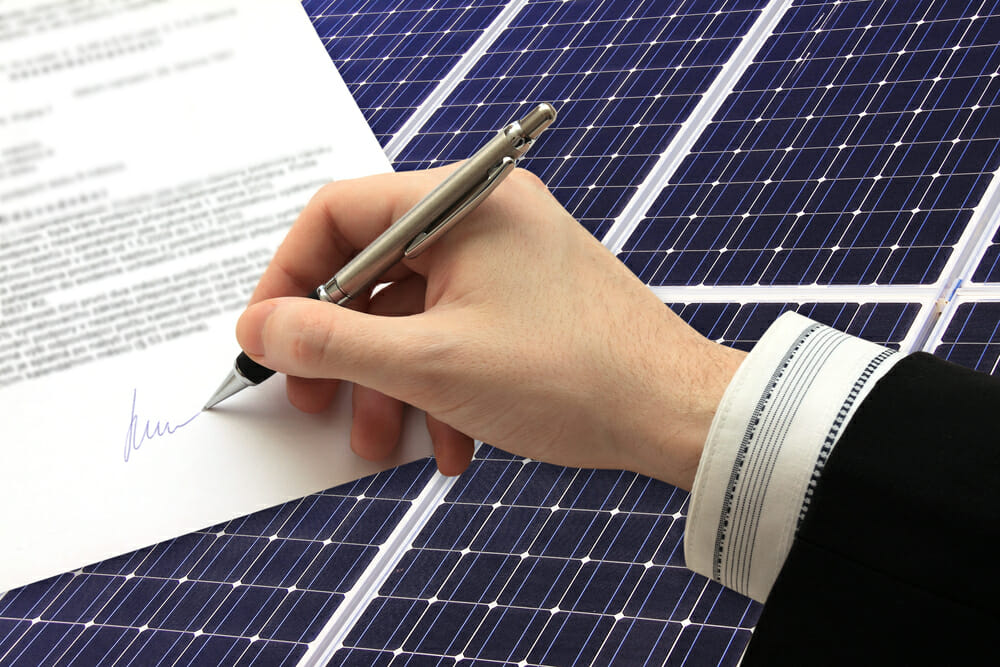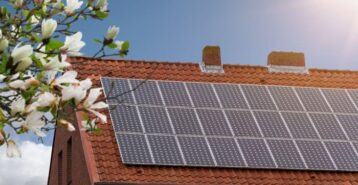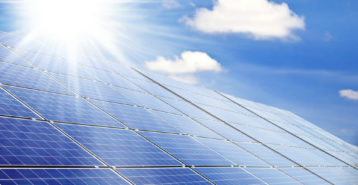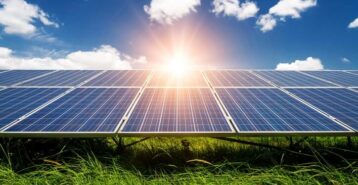Leasing Solar Panels: What to Know in 2026
Ready to make the switch to solar energy but unsure about the financial investment? Maybe it’s time to think about leasing solar panels. With a solar lease, you can reduce upfront costs and pay monthly as a replacement for your electric bill. Let’s dive into how leasing works, its benefits and drawbacks, and how to get started with a trusted solar company.
Solar PPA vs Lease
There are two main ways homeowners can get affordable solar panels — by signing a solar panel lease, or pursuing a Power Purchase Agreements (PPA). The primary differences between them are:
- Lease: You pay to lease the solar equipment or for the power produced.
- PPA: You ultimately have the option to purchase your solar panel system.
Of course, nothing in life is completely free. With a solar lease agreement or PPA, the cost of the solar panels is figured into your monthly bill and spread out over time. This, however, makes the overall payment much more convenient.
Overall, both of these approaches offer some appealing ways to save. Let’s take a look at the two choices to see why you may be interested in a solar lease or PPA.
Solar Panel Leasing
How Does A Solar Panel Lease Work?
A solar lease agreement is a hands-off, manageable way for homeowners to get solar panels. Essentially, a you lend a solar service provider your roof, and they lend you the equipment to generate clean, renewable energy. Here’s how it works.
- Leasing Solar Panels Often Requires $0 Down: You enter an agreement with a solar company that installs and maintains your system. Instead of paying upfront, you make fixed monthly payments—similar to financing a car.
- Your Solar Lease Payments May Match Your Electricity Bill: Most solar leases are structured so your monthly cost is close to what you already pay for power, making the transition budget-friendly.
- Solar Lease Payments Can Increase Slightly Over Time: Many providers build in small annual increases, typically capped around 3%, to stay in line with rising utility rates, potentially saving you money over time.
- Read Your Solar Lease Carefully: Ask your solar provider to clarify any confusing terms so you fully understand the details of your agreement.
- Installation and Maintenance Are Typically Covered: A local solar company handles setup and service. Some leases also include warranties, insurance, or complimentary repairs. Just be aware that you may still be responsible for replacing faulty equipment.
Solar Leasing Contracts
When entering a solar panel lease agreement, it’s important to read the terms carefully before signing. Here are some specific contract terms and options to consider when leasing:
- Down Payment: Is there a payment due when you sign the contract? At installation? At inspection? Most companies require zero down when leasing.
- First Monthly Payment: What is the initial monthly payment? Some lease agreements offer the option to pre-pay some of your electricity in order to lower your monthly payments, much like you would when financing a car.
- Rate Increase Cap: Electricity prices tend to rise about 2% to 5% each year. So the monthly amount you pay your solar company to provide power may also increase slightly year to year. However, your lease agreement will include a cap on this increase. This way, your monthly payments never increase by more than a set percentage, usually about 1% to 5% percent.
- Length of Lease Term: Traditional solar leases are usually 20-30 years, about the life-span of your solar panels.
- Contract End: At the end of your initial lease term, your options may include renewing the solar lease contract for one to ten years, upgrading to a newer solar panel system and signing a new contract, or removing the system.
- Purchasing Panels: A typical solar lease does not include the option to buy at the end of the contract term. If you think you will want to buy the panels eventually, explore a PPA instead.
- Moving Considerations: If you decide to move, your options may include transferring the lease and payments to the buyer of your home, moving the solar panel system to your new home, or paying to remove the solar panels from your roof.
Pros and Cons of Leasing Solar Panels
-
Pros
- Low or no upfront payment
- Customization options
- No maintenance costs
-
Cons
- No option to buy panels
- Cannot sell electricity
- Leasing not available everywhere
Advantages
By leasing solar panels, you replace your monthly utility bill with a monthly equipment lease payment and often pay no cash up front. You enjoy low (or no) installation and maintenance costs. You may also benefit from solar panels in other utility costs by home heating through solar power, solar pool heating, and even solar hot water heater installation.
When installing your new solar energy system, you may also have the added benefit of deciding what type of solar panels are installed, different style options for mounting new solar panels, and even the solar inverter installed on your home.
Disadvantages
When you lease, you don’t usually have an option to eventually buy. Also, by leasing, you forfeit the ability to gain price advantage by selling electricity with solar net metering (in other words, selling any power you use back to your local utility company).
A word of caution: Before you start searching for a solar installer, make sure leases are available where you live, because they may not be available in less sunny states. We recommend doing some research on your Solar Sun Number Score for your home before leasing.
Power Purchase Agreements (PPAs)
How Does a Power Purchase Agreement (PPA) Work?
Another way to finance your solar panel system is through a PPA. With this option, you purchase the electricity that your system generates, instead of the system itself, at a reduced rate over a fixed period of time. Your payments are determined per kilowatt hour (kWh) of energy used. You’ll also have the option to purchase the solar system at predetermined times throughout the lease term.
Similar to a traditional solar panel lease, the benefit of a PPA is that the solar company that installs and maintains your system handles most or all of the upfront costs and logistics. They will also bear the risks associated with the system’s operation and performance. In addition, the cost you pay for your electricity will be set at a low rate, determined in one of two ways:
- A Fixed Escalator Plan: Your electricity prices rise at a predetermined rate between 2% to 5% percent. This is often lower than the increased prices you would otherwise pay your utility company.
- A Fixed Price Plan: The price you pay remains constant throughout the loan term. As utility prices rise over time, your prices won’t budge, which makes for easy household budgeting.
Unlike a traditional solar lease, with a PPA you have the option to buy your energy system from the developer. The downside of the PPA is that it’s bit more complicated than a lease. Since only about half of U.S. states allow PPAs, first make sure your state is one of them. You can check this map.
Contract Terms to Consider with a PPA
- How Much Will My Energy Cost? The cost of electricity will be a fixed, predictable, low rate. It will not increase beyond a predetermined rate, usually 2% to 5%.
- How long is the lease term? About 10 to 25 years. The solar developer is responsible for operation and maintenance of the system during that time.
- What are my options to buy? At certain points within your PPA, for example, at five years or at the end of the lease, the homeowner can decide to buy the solar panel system. As the owner of a residential solar panel system, you may then be eligible for additional rebates and tax incentives.
Solar Leasing vs. PPA: What’s the Difference?
- Payment Structure: With a Power Purchase Agreement (PPA), you pay for the energy you use, typically at a fixed per-kWh rate that’s lower than your current utility rate. A solar lease, on the other hand, involves fixed monthly payments regardless of usage.
- Ownership Option: Many PPAs include the option to purchase your system later. Solar leases may or may not offer this option, depending on your agreement.
- Low or No Upfront Costs: Both solar leasing and PPAs allow homeowners to install solar panels without paying high upfront costs. Installation, permitting, and system design are all handled by the provider.
- Maintenance and Monitoring Included: The service provider takes care of system maintenance, repairs, and monitoring, giving you peace of mind.
- Third-Party Ownership Is Common: About 60% of U.S. homeowners with solar systems have used third-party ownership through a lease or PPA.
- Monthly Costs Comparable to Utility Bills: Your solar lease or PPA payment is typically on par with or lower than your existing electric bill, so you can start saving as soon as your system is turned on.
Compare top-rated solar pros in your area.
Read real homeowner reviews, explore qualifications, and view promotions. Modernize makes it easy to browse professionals and find one that will be perfect for your project.









